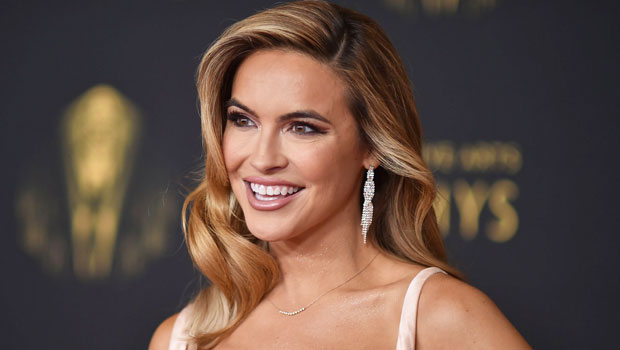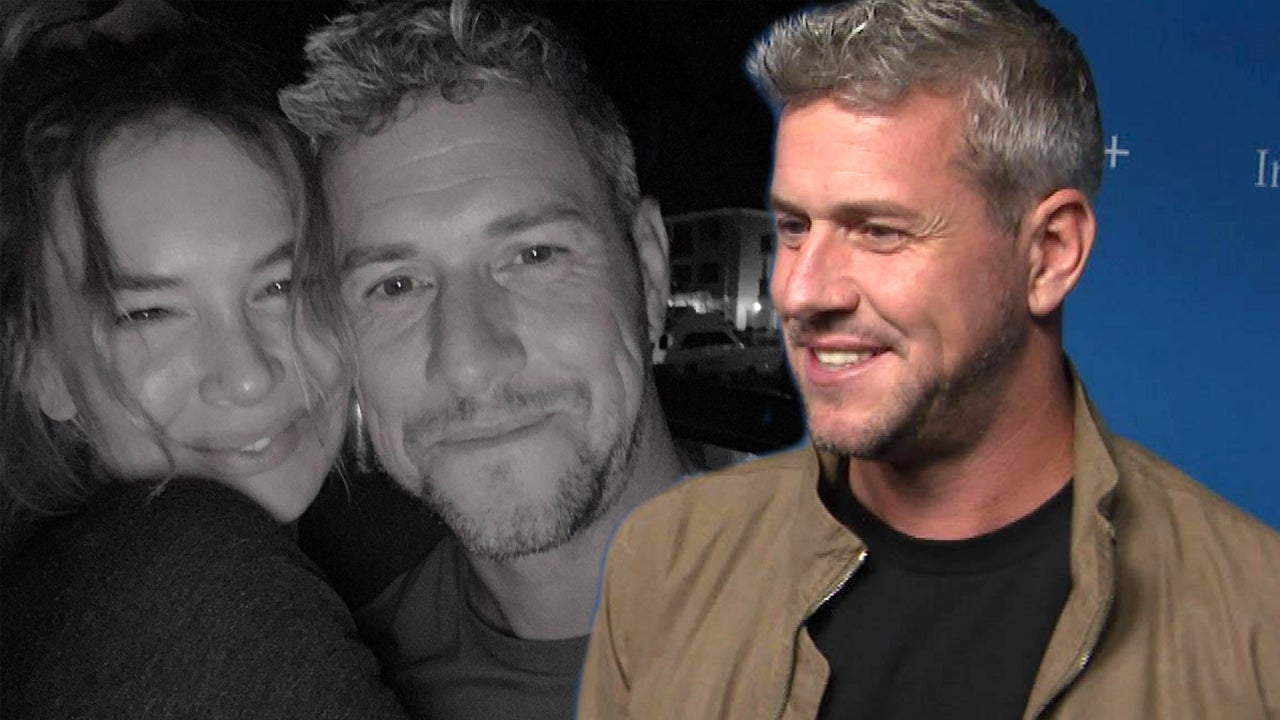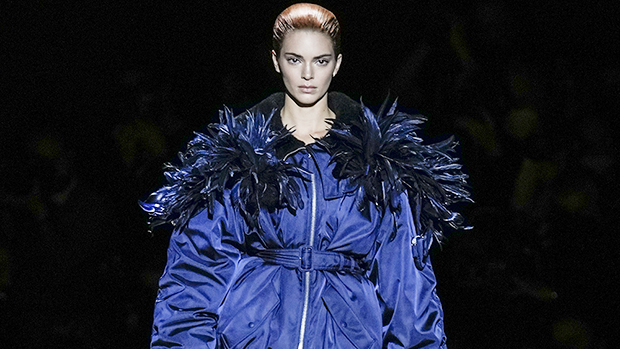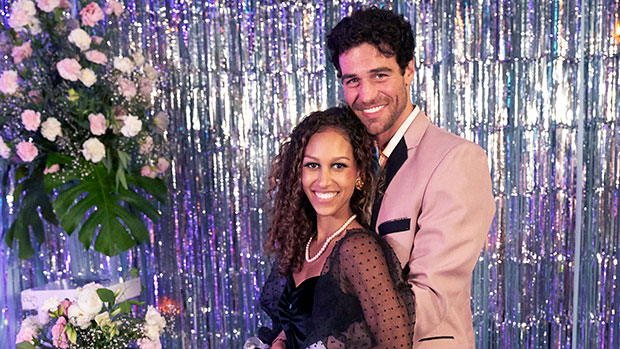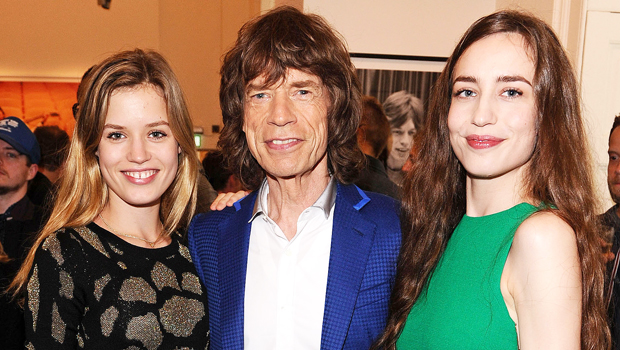'Downton Abbey': How an Alfred Hitchcock Film Inspired 'A New Era' (Exclusive)
The movie-within-a-movie subplot was pulled from real-life experiences on the set of the 1929 film 'Blackmail.'
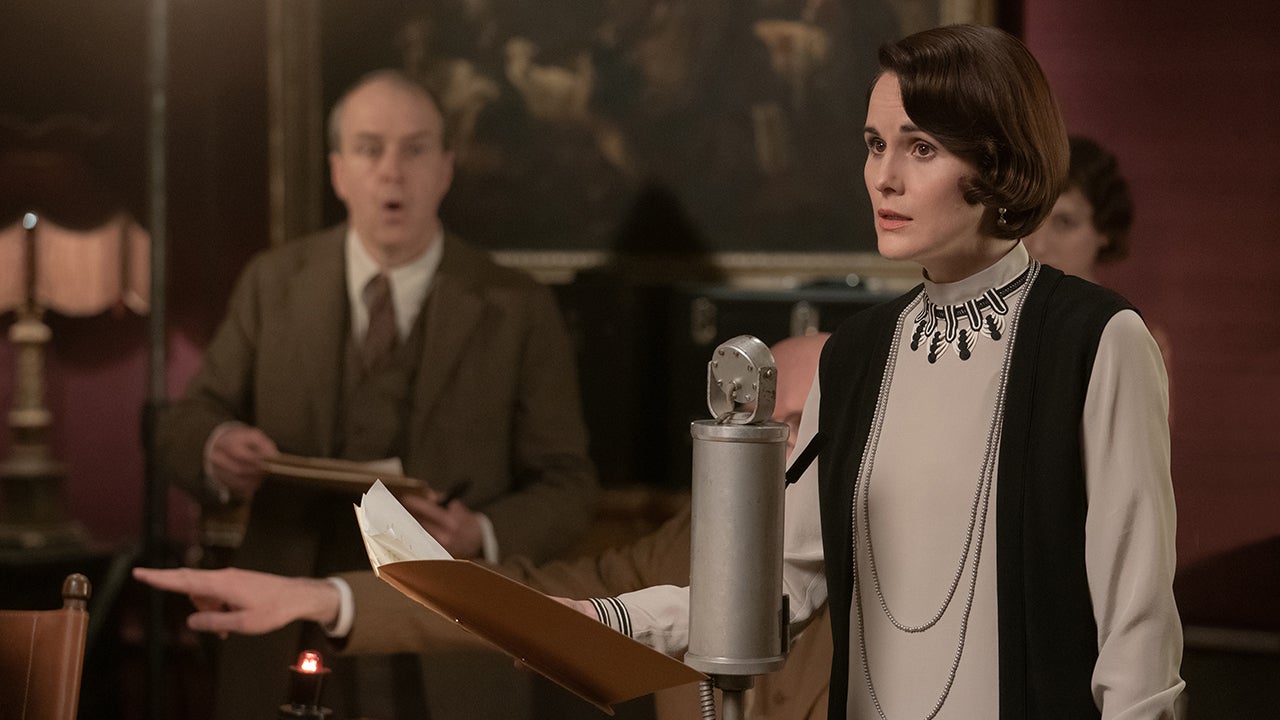
Much like the first film, Downton Abbey: A New Era pulls from real-life events, with the historical drama drawing inspiration from a chapter in Alfred Hitchcock’s professional life as a director. According to director Simon Curtis, the sequel’s movie-within-a-movie subplot is a direct reference to the prolific filmmaker’s early days of making silent movies, most notably 1929’s Blackmail.
[Warning: Some spoilers for Downton Abbey: A New Era]
At the time, Hitchcock was working on his latest silent film, an adaptation of Charles Bennett’s 1928 play about a woman who is blackmailed by a man who tried to assault her. Following the success of The Jazz Singer and Lights of New York, however, the production on Hitchcock’s film was converted to include sound to take advantage of audiences’ newfound interest in “talkies.”

Getty Images
While the film was able to move forward with sound elements, it quickly became clear that its star, silent actress Anny Ondra, didn’t have a voice suitable for audio. Apparently, the Czech actress’ accent was so strong they had to hire another actress, Joan Barry, to record her dialogue in real time.
For many actors at the time, the conversion to sound meant that their onscreen careers were over. And for Ondra, it was the only time she starred in an English-language talkie, with the rest of her career being only in silent or German-language films.
In A New Era, much of Blackmail’s production drama plays out in similar fashion after director Jack Barber (Hugh Dancy) gets the permission of Lady Mary (Michelle Dockery) to film his latest silent movie at the Yorkshire estate. Accompanying the director are his two stars, Guy Dexter (Dominic West) and Myrna Dalgleish (Laura Haddock), who are revered by the downstairs staff for their work onscreen.
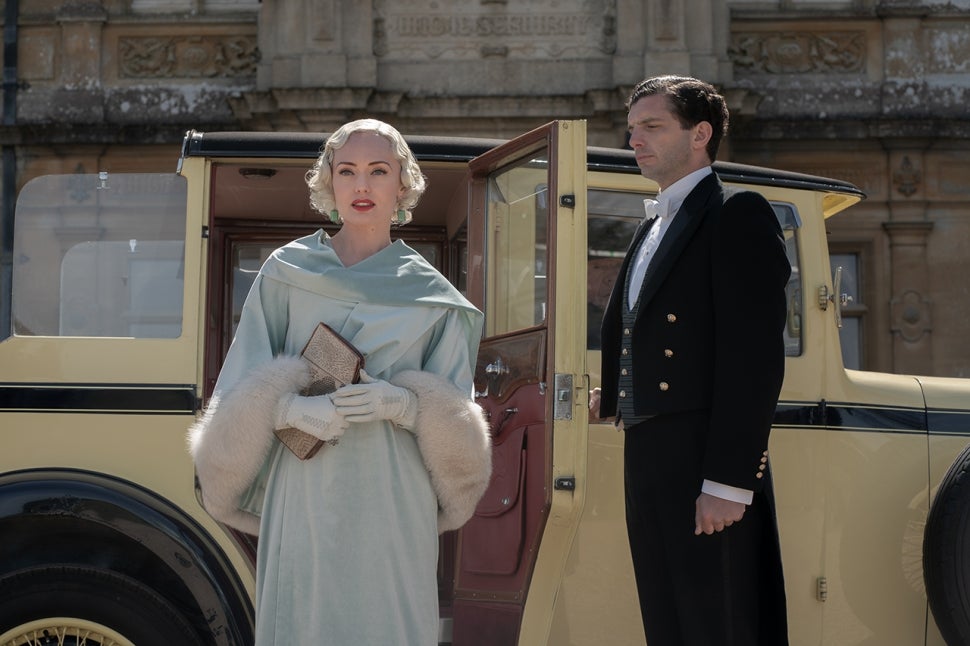
Focus Features
But when the production hits a snag and is forced to change course, Mary as well as Moseley (Kevin Doyle) jump in to save the movie, helping to record and write new dialogue, respectively. Though, the conversion to sound seemingly marks the end for the lead actress, whose accent is too harsh to be used in the film.
Not only was the film inspired by the production of Blackmail, but Downton Abbey has a personal connection to the real-life events. According to Curtis, longtime executive producer Gareth Neame’s grandfather, Ronald Neame, was an assistant director to Hitchcock, “where this very story happened,” he says, adding that “they had an Eastern European silent actress who couldn’t do the London accent.”
And like they do with Mary in A New Era, “they had another actress live dubbing during [filming],” he continues.
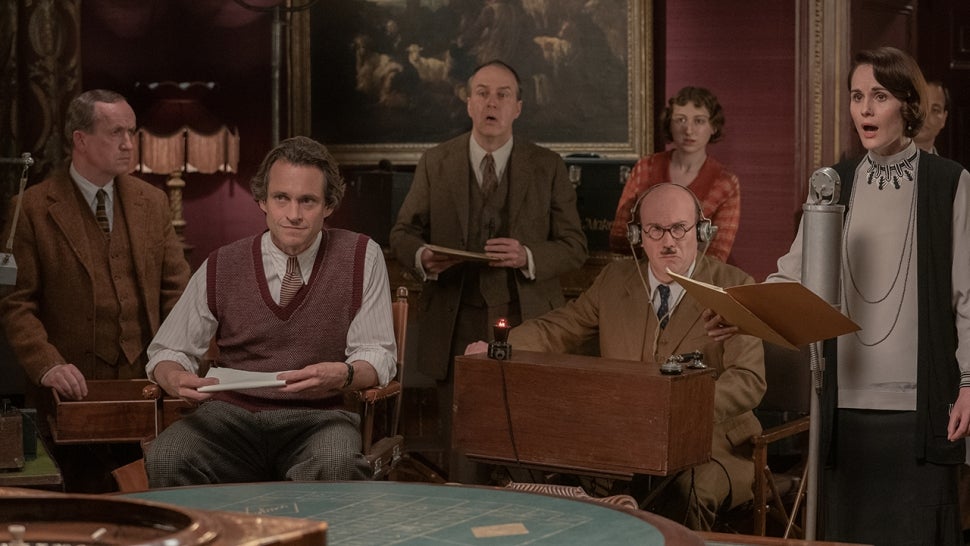
Focus Features
In terms of recreating that experience in the sequel, Curtis says the whole process “was very complicated because in these small rooms, you have the fake crews, the real crews and who knows how many actors. It’s a big undertaking.”
Despite the effort, the director says the whole experience was “challenging yet very stimulating.”
Meanwhile, for the actors, “it was a history lesson,” Doyle says of the movie-within-a-movie subplot. “That’s right. We learned a lot about silent movies and making silent movies,” Dancy adds. “It was fun to bring that into Downton and shake up that world a little bit.”
Downton Abbey: A New Era is now in theaters.
RELATED CONTENT
'Downton Abbey' Cast Talks 'A New Era,' New Characters and New Locations (Exclusive)
'Downton Abbey': Get an Official Behind-the-Scenes Look at 'A New Era' (Exclusive)
Michelle Dockery Talks 'Downton Abbey' Sequel and Possibility of More Films (Exclusive)
Lesley Nicol Talks 'Downton Abbey: A New Era' and Playing Mrs. Patmore (Exclusive)

 Astrong
Astrong 







